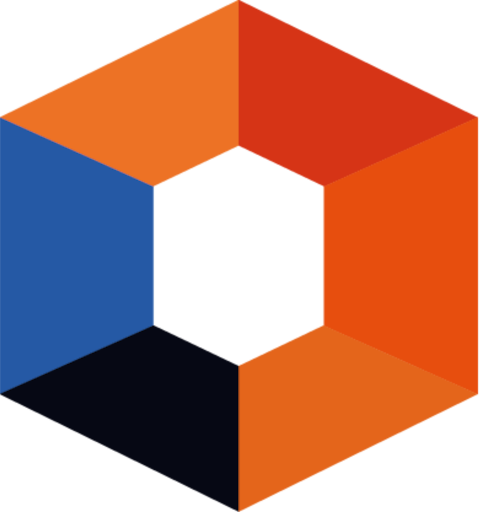While most brands experiment with AI-generated content through simple prompts, the real competitive advantage lies in building data-driven AIGC systems that learn, adapt, and optimize continuously.
The Prompt Trap: Why Most AIGC Fails
The majority of brands approach AI-generated content like they’re ordering from a menu: “Create a product photo,” “Generate a social post,” “Make it more luxurious.” This prompt-and-pray approach might work for one-off content, but it’s fundamentally inadequate for systematic brand content production.
The problem: Without data feedback loops, AI-generated content remains static, generic, and disconnected from actual performance.
The solution: Data-driven AIGC that treats every generated asset as a learning opportunity.
The AIGC Data Revolution
At HubStudio, we’ve moved beyond traditional prompt engineering to what we call “Performance-Guided AI Content Generation”—a methodology that uses real-time performance data to continuously optimize AI outputs.
Here’s how data transforms every stage of AIGC production:
1. Audience-Informed Model Training
Traditional approach: Train AI models on generic datasets
Data-driven approach: Train models using your brand’s highest-performing content, customer behavior data, and conversion patterns
Example: Instead of generating “lifestyle imagery,” we analyze which specific lifestyle contexts drive engagement for your target demographic—urban millennials respond to different visual cues than suburban families.
2. Performance-Optimized Prompt Engineering
Traditional approach: Creative intuition guides prompts
Data-driven approach: Historical performance data informs prompt construction
We track which prompt elements consistently drive higher engagement:
- Color palettes that outperform by audience segment
- Composition styles that increase conversion rates
- Emotional tones that resonate with specific customer personas
3. Real-Time Content Optimization
Traditional approach: Generate content, publish, hope for the best
Data-driven approach: Continuous A/B testing and optimization cycles
Our AIGC system automatically generates multiple variations, tests them against performance benchmarks, and iterates based on real audience response data.
The HubStudio Framework: From Data to Deployment
Phase 1: Data Collection & Analysis
We integrate multiple data sources to understand what drives performance:
- Social Media Analytics: Which visual styles generate highest engagement
- E-commerce Data: Product imagery that converts best
- Customer Journey Analytics: Content preferences at different funnel stages
- Competitive Intelligence: Market gaps and opportunities
- Brand Performance History: Your proven creative DNA
Phase 2: AI Model Customization
Using this performance data, we customize AI models specifically for your brand:
- Custom Training Sets: Built from your highest-performing content
- Brand Style Codification: Converting brand guidelines into algorithmic parameters
- Audience Segmentation: Different model outputs for different customer groups
- Platform Optimization: Tailored outputs for Instagram vs. LinkedIn vs. e-commerce
Phase 3: Intelligent Content Generation
Our AIGC system doesn’t just create content—it creates optimized content:
Input: Product launch campaign for luxury skincare
Data Layer: Luxury beauty audience prefers minimal compositions,
gold accent colors, and aspirational lifestyle contexts
AI Output: Clean, minimalist product shots with subtle gold
lighting and sophisticated lifestyle integration
Performance Prediction: 73% likelihood of above-average engagement
Phase 4: Continuous Learning Loop
Every piece of generated content feeds back into the system:
- Performance Tracking: Real-time monitoring across all platforms
- Pattern Recognition: Identifying what works and what doesn’t
- Model Refinement: Continuous improvement of AI outputs
- Strategy Evolution: Data-driven creative direction adjustments
Case Study: Transforming E-commerce Through Data-Driven AIGC
Challenge: A beauty brand needed 500+ product images across multiple platforms but had limited photography budget and tight timelines.
Traditional Approach: Hire photographers, schedule shoots, hope the creative direction resonates with audiences.
Our Data-Driven AIGC Solution:
- Data Analysis: Analyzed 18 months of their social media and e-commerce performance
- Pattern Identification: Discovered their audience responded 3x better to natural lighting and minimal props
- AI Training: Customized models using their top-performing product imagery
- Systematic Generation: Created 500+ variations optimized for different platforms and customer segments
- Performance Optimization: A/B tested outputs and refined based on real conversion data
Results:
- 40% increase in click-through rates
- 60% reduction in content production costs
- 75% faster time-to-market
- 25% improvement in conversion rates
The Metrics That Matter for AIGC
Data-driven AIGC requires tracking different metrics than traditional content:
Generation Efficiency Metrics
- Time from brief to final asset
- Cost per generated variation
- Revision cycles required
- Quality consistency scores
Performance Prediction Accuracy
- How well AI-predicted performance matches actual results
- Model confidence levels vs. real outcomes
- Cross-platform performance variations
Brand Consistency Metrics
- Visual brand guideline adherence
- Tone of voice consistency
- Message alignment scores
- Customer recognition rates
Business Impact Metrics
- Engagement rates by content type
- Conversion improvements
- Cost savings vs. traditional production
- Time-to-market acceleration
The Competitive Advantage
Brands using data-driven AIGC gain multiple advantages:
Speed: Generate variations in hours, not weeks
Scale: Produce thousands of assets without linear cost increases
Precision: Every piece of content is optimized for its specific purpose
Learning: Performance improves continuously without additional training costs
Agility: Rapidly adapt to trending topics or market changes
Getting Started: Your Data-Driven AIGC Roadmap
Month 1: Data Foundation
- Audit existing content performance across all channels
- Identify your highest-performing creative patterns
- Establish baseline metrics and tracking systems
Month 2: AI Customization
- Train custom models using your performance data
- Develop brand-specific prompt libraries
- Create initial test content variations
Month 3: Optimization & Scale
- Launch A/B testing programs
- Refine models based on performance data
- Scale successful patterns across additional content types
The Future of Brand Content
The brands that win in the next decade won’t be those with the biggest content budgets—they’ll be those with the smartest content systems.
Data-driven AIGC represents the evolution from content creation to content intelligence. Instead of guessing what will resonate, you’ll know. Instead of creating and hoping, you’ll optimize and improve.
The question isn’t whether AI will transform content creation—it’s whether your brand will use data to make that transformation strategic rather than random.

